I’ve always been interested in the how and why of the golf swing. I want to understand my motion and what I need to do to make adjustments when necessary. I studied physics at Southern Methodist University, but you don’t need a science degree to grasp that mastering one swing is easier than mastering a variety of them. So with the help of my coach, Mike Schy, I set out to build a single swing that would work no matter what club I was using. I try to make every swing on the same plane, and I have my irons set up so that they’re all the same length, lie angle and swingweight, with the lofts stepped in 4-degree increments. With five wins in less than two seasons on the PGA Tour, including two FedEx Cup Playoff events, I guess you could say it works for me. But I also think you might find it to be an easier way to play golf. Even if you don’t switch to one-length clubs, you can take a lot of what makes it work and improve your game. I’ll show you how here.
Hit it straight with rotation…
Before you grab a club, learn how to move your body better. Rotating it around a single axis gives you the best chance of repeatedly making good contact with the ball. My thought is to pivot around my left hip joint as that axis [below]. When I swing down into the ball, I rotate as quickly as I can. The most precise wedge players use the same concept, keeping their weight on their front side and rotating without any shift.
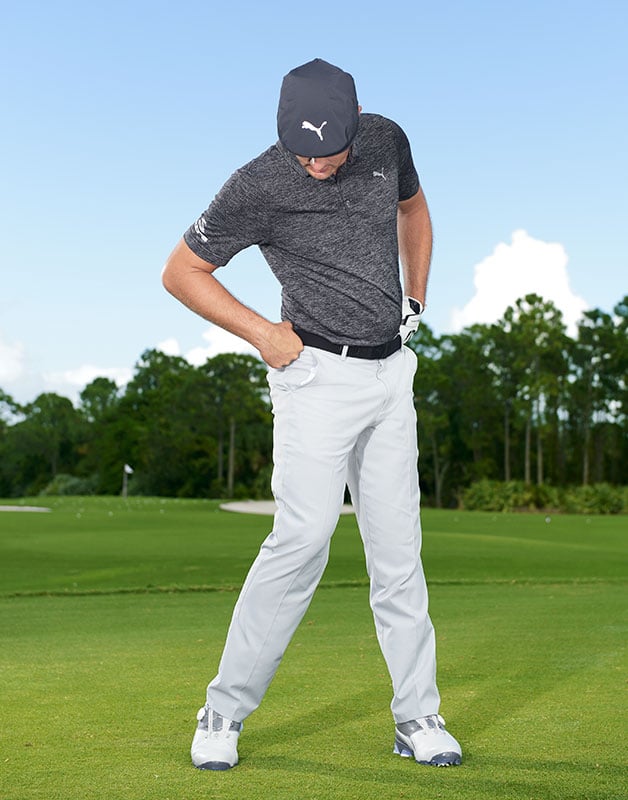

…instead of a big shift
Some players use a big weight shift to get more leverage from the ground so they can swing the club faster. But when it comes to accuracy, my pivot makes it a lot easier to hit it in the centre of the face. Here’s a drill to make you more sensitive to the correct motion. Rotate around each hip joint like I am [below] and then with your weight centred. Feeling the differences will help you pivot better when you swing.
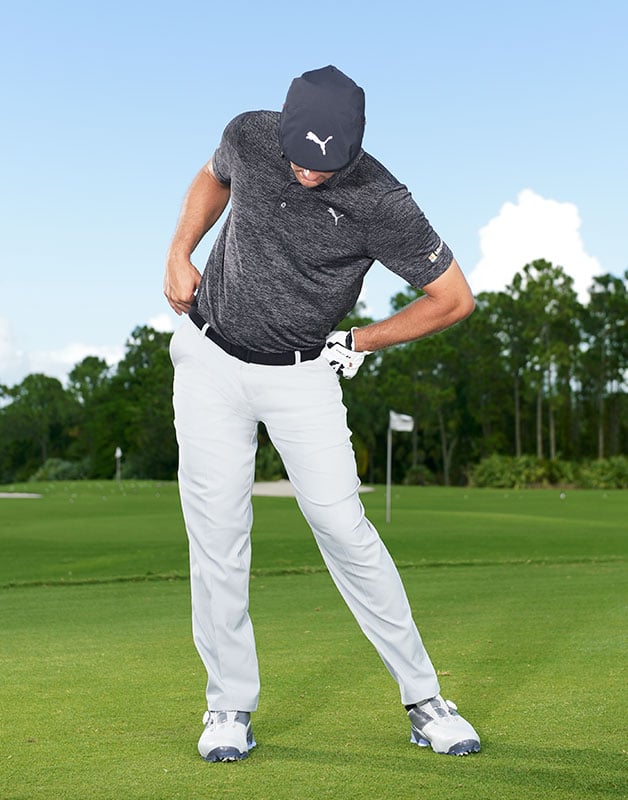
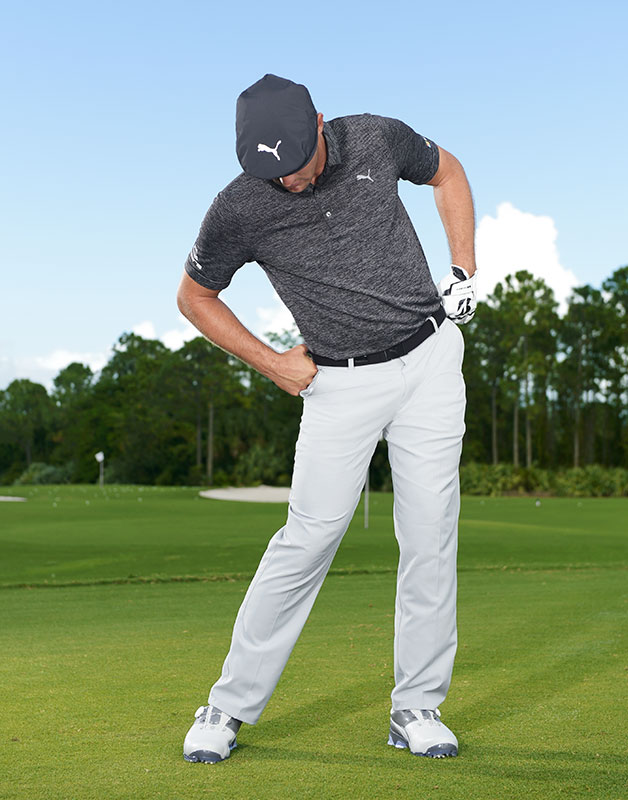
Making a case for my approach to golf
 In the photos for this article, I’m demonstrating with a pitching wedge and a 4-iron. But no matter what iron I’m using, the shaft is 37.5 inches long – about the same as a typical 6-iron. All my irons have the same lie angle, too, about 10 degrees more upright than standard. Because they’re all the same length and lie, I find it easier to consistently set up the same way and swing on one plane.
In the photos for this article, I’m demonstrating with a pitching wedge and a 4-iron. But no matter what iron I’m using, the shaft is 37.5 inches long – about the same as a typical 6-iron. All my irons have the same lie angle, too, about 10 degrees more upright than standard. Because they’re all the same length and lie, I find it easier to consistently set up the same way and swing on one plane.
It’s how I’ve been playing since 2011, when I turned 18. The large grips I use also help. They discourage a lot of extra hand action when I swing. Fewer variables mean there are fewer things to investigate when I’m off. The proof my set makeup and swing style really work can be seen in my progression of improvement. It started in 2015, when I won the NCAA individual 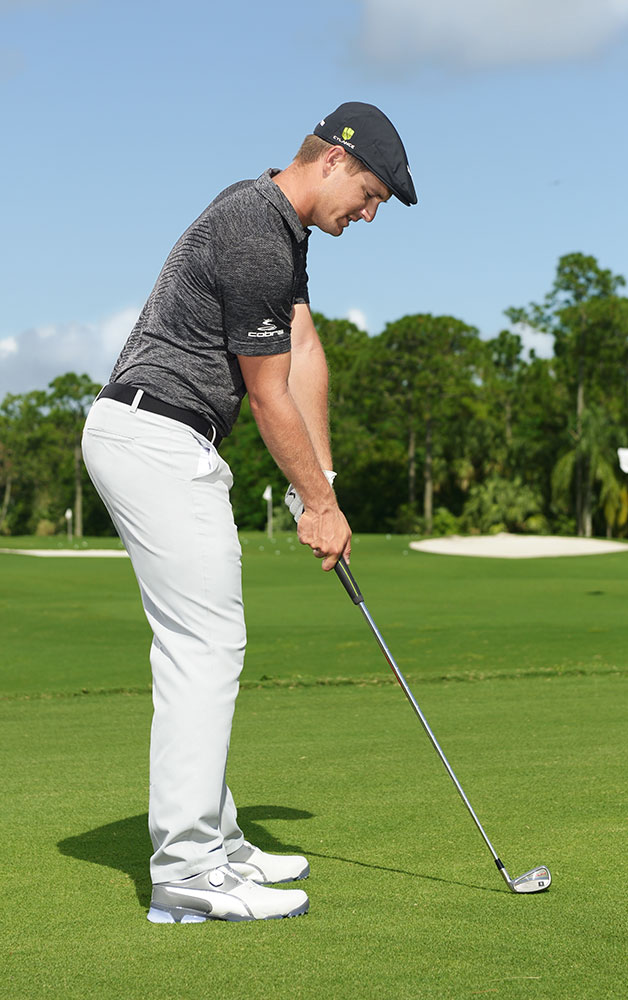 championship and the US Amateur. Then I won the DAP Championship on the Web.com Tour and got a PGA Tour card for 2017. In my rookie year, I earned my first PGA Tour title at the John Deere Classic and followed up with four more wins last year. Although my game can get even better, I’m also interested in growing the game and making it possible for more golfers to play well. That’s where I think my approach has real potential. If you can remove some of the variables that make consistently good ball-striking difficult, we should be able to get more people into the sport and keep them playing. I get some funny looks from time to time because my clubs and swing are different than almost every other pro, but I’m happy to be a trailblazer.
championship and the US Amateur. Then I won the DAP Championship on the Web.com Tour and got a PGA Tour card for 2017. In my rookie year, I earned my first PGA Tour title at the John Deere Classic and followed up with four more wins last year. Although my game can get even better, I’m also interested in growing the game and making it possible for more golfers to play well. That’s where I think my approach has real potential. If you can remove some of the variables that make consistently good ball-striking difficult, we should be able to get more people into the sport and keep them playing. I get some funny looks from time to time because my clubs and swing are different than almost every other pro, but I’m happy to be a trailblazer.
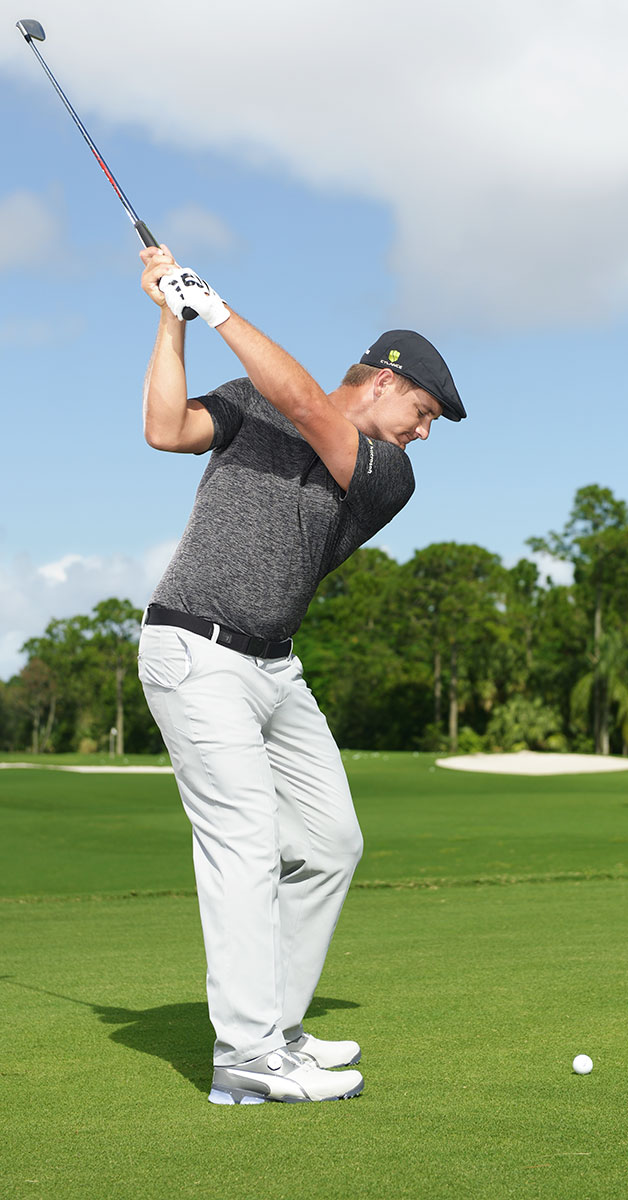
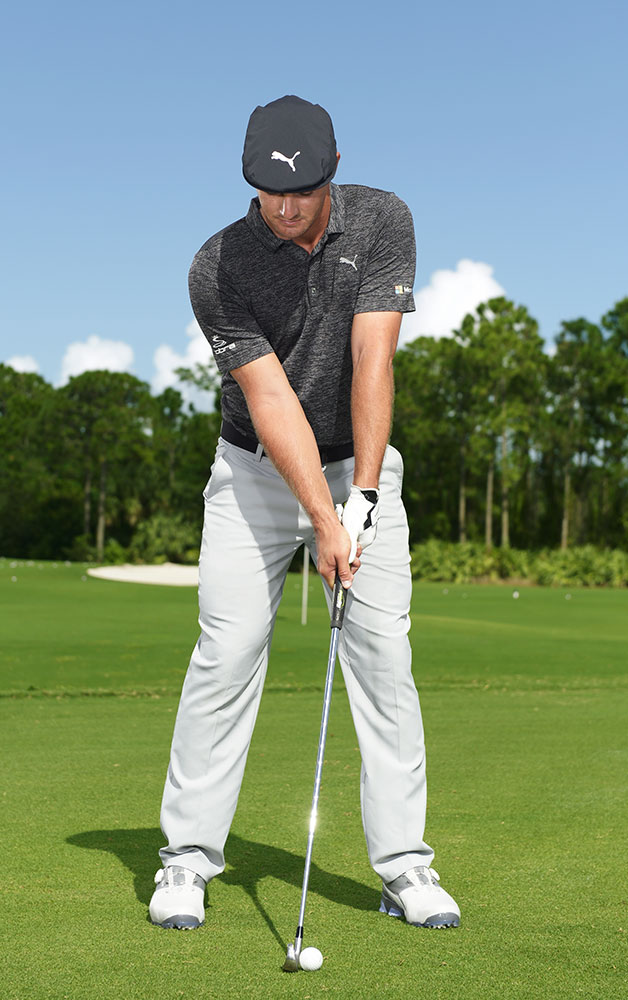 Improve your ball-striking at address
Improve your ball-striking at address
Once you can understand and feel a good impact position, you’ll have a better chance to re-create it. For me, that means returning to where I started. When I address the ball, I closely mimic the position I want to be in at impact. My hands are higher, holding the grip more upright and leaning slightly more towards the target [left] than you’re probably used to seeing from other pros. This helps me hit it straighter.
Add some width to hit it your best
Extension is a concept you hear often in golf instruction. The idea is to swing into the ball with the arms fully extended to hit it great. To get good width, I focus on what my right arm should be doing. Here I’m practising where I want it to be at this point in the backswing [below]. By establishing this width, I put myself in better position to be extended as I swing through impact. It’s a simple drill that will help you pure it, too.
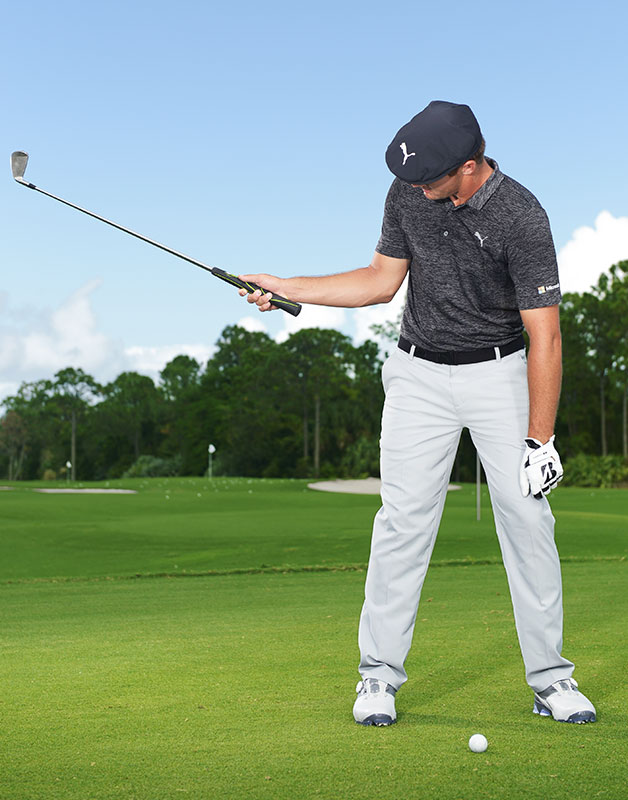
– Bryson DeChambeau spoke with Matthew Rudy



